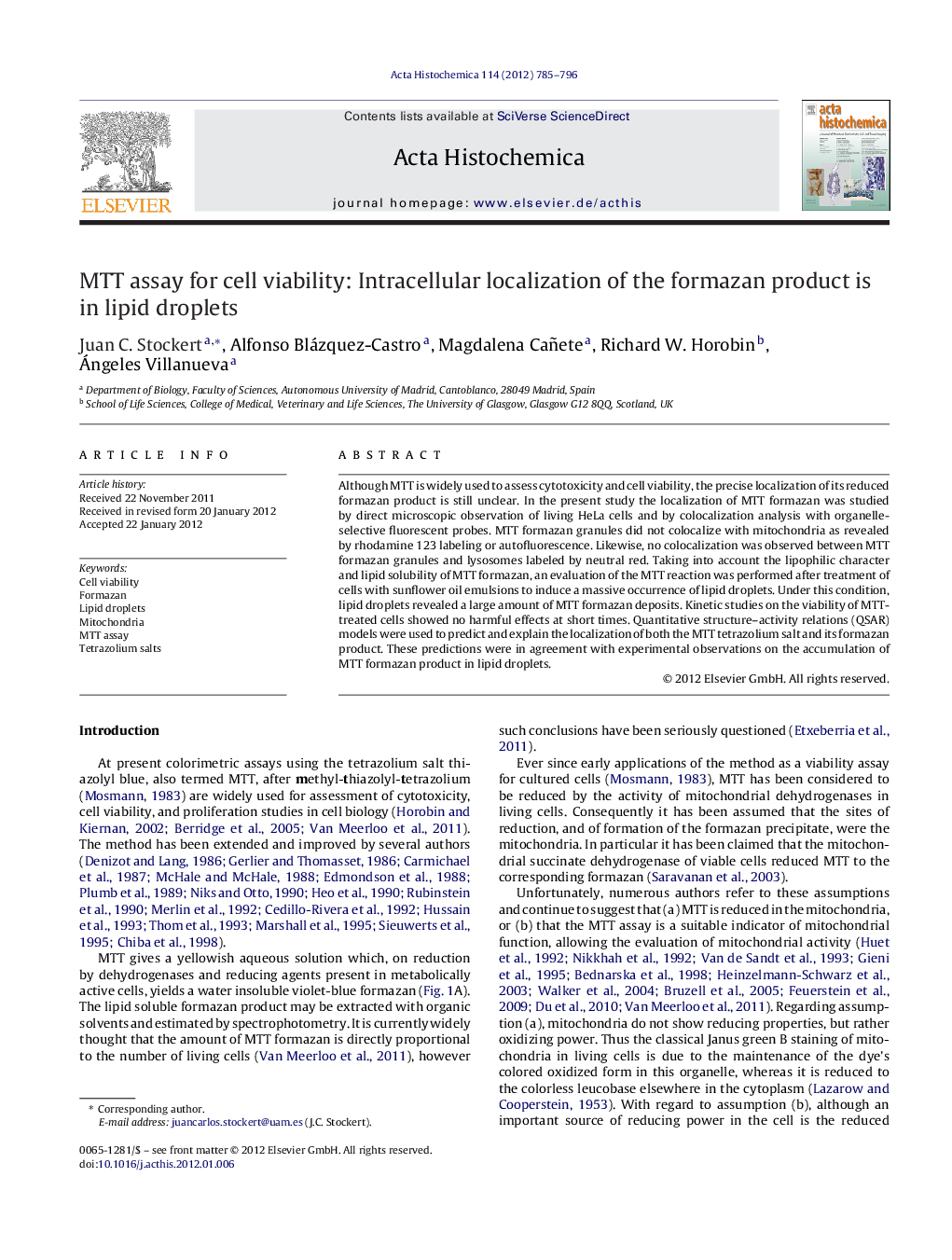| Article ID | Journal | Published Year | Pages | File Type |
|---|---|---|---|---|
| 1923942 | Acta Histochemica | 2012 | 12 Pages |
Although MTT is widely used to assess cytotoxicity and cell viability, the precise localization of its reduced formazan product is still unclear. In the present study the localization of MTT formazan was studied by direct microscopic observation of living HeLa cells and by colocalization analysis with organelle-selective fluorescent probes. MTT formazan granules did not colocalize with mitochondria as revealed by rhodamine 123 labeling or autofluorescence. Likewise, no colocalization was observed between MTT formazan granules and lysosomes labeled by neutral red. Taking into account the lipophilic character and lipid solubility of MTT formazan, an evaluation of the MTT reaction was performed after treatment of cells with sunflower oil emulsions to induce a massive occurrence of lipid droplets. Under this condition, lipid droplets revealed a large amount of MTT formazan deposits. Kinetic studies on the viability of MTT-treated cells showed no harmful effects at short times. Quantitative structure–activity relations (QSAR) models were used to predict and explain the localization of both the MTT tetrazolium salt and its formazan product. These predictions were in agreement with experimental observations on the accumulation of MTT formazan product in lipid droplets.
